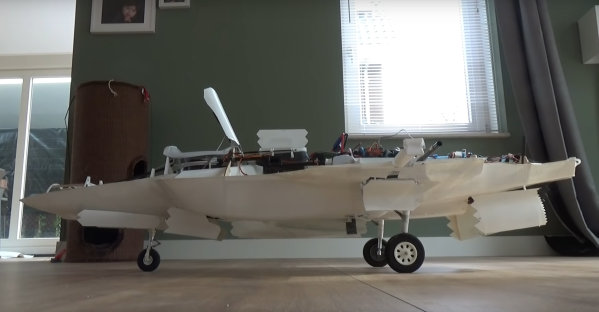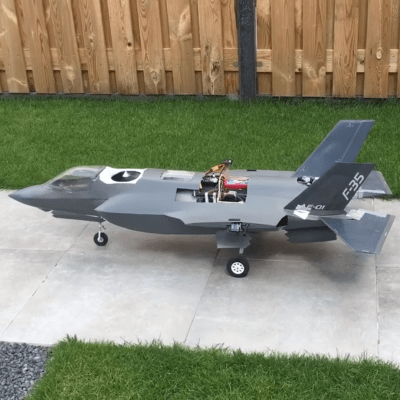[Ken] recently obtained an attitude indicator—sometimes called an artificial horizon—from an F-4 fighter jet. Unlike some indicators, the F-4’s can rotate to show pitch, roll, and yaw, so it moves in three different directions. [Ken] wondered how that could work, so, like any of us, he took it apart to find out.
With the cover off, the device is a marvel of compact design. Then you realize that some of the circuit is inside the ball, so there’s even more than it appears at a quick glance. As you might have guessed, there are two separate slip rings that allow the ball to turn freely without tangling wires. Of course, even if you don’t tangle wires, getting the ball to reflect the aircraft’s orientation is an exercise in control theory, and [Ken] shows us the servo loop that makes it happen. There’s a gyroscope and synchros—sometimes known by the trade name selsyn—to keep everything in the same position.
You have to be amazed by the designers of things like this. Sophisticated both electrically and mechanically, rugged, compact, and able to handle a lot of stress. Good thing it didn’t have to be cheap.
We’ve seen inside an ADI before. If you want to make any of this look simple, check out the mechanical flight computers from the 1950s.



 [Joel] wants his model to be as close as possible to the real thing, and has integrated all these features into his build. Thrust is provided by two EDF motors, the pivoting nozzle is 3D printed and actuated by three set of small DC motors, and all 5 doors for VTOL are actuated by a single servo in the nose via a series of linkages. For tilt control, air from the main fan is channeled to the wing-tips and controlled by servo-actuated valves. A flight controller intended for use on a multi-rotor is used to help keep the plane stable while hovering. One iteration of this plane bit the dust during development, but [Joel] has done successful test flights for both hover and conventional horizontal flight. The really tricky part will be transitioning between flight modes, and [Joel] hopes to achieve that in the near future.
[Joel] wants his model to be as close as possible to the real thing, and has integrated all these features into his build. Thrust is provided by two EDF motors, the pivoting nozzle is 3D printed and actuated by three set of small DC motors, and all 5 doors for VTOL are actuated by a single servo in the nose via a series of linkages. For tilt control, air from the main fan is channeled to the wing-tips and controlled by servo-actuated valves. A flight controller intended for use on a multi-rotor is used to help keep the plane stable while hovering. One iteration of this plane bit the dust during development, but [Joel] has done successful test flights for both hover and conventional horizontal flight. The really tricky part will be transitioning between flight modes, and [Joel] hopes to achieve that in the near future.








